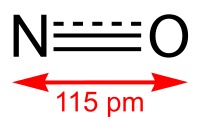
Photo from wikipedia
The present study was designed to analyze the spatial distributions of ground-level ozone (GLO) concentrations in Ranchi (Jharkhand, India) using geostatistical approaches. From September 2014 to August 2015, monthly GLO… Click to show full abstract
The present study was designed to analyze the spatial distributions of ground-level ozone (GLO) concentrations in Ranchi (Jharkhand, India) using geostatistical approaches. From September 2014 to August 2015, monthly GLO concentrations were monitored in 40-identified locations distributed in the region of study. In every month, the monitoring was done at three different time periods of the day; 5.30 AM to 7.30 AM, 11.30 AM to 1.30 PM, and 5.30 PM to 8 PM). The time duration was assigned based on the temporal variations of GLO concentrations. The descriptive statistics indicate that the spatial mean ozone concentrations ranged from 23.45 μg m-3 to 53.91 μg m-3 in morning hours, from 82.50 μg m-3 to 126.66 μg m-3 in the day time and from 40.04 μg m-3 to 71.25 μg m-3 in the evening hours. The higher level of spatial variance observed in the months of December (standard deviation: 24.21), July (standard deviation: 29.59) and November (standard deviation: 19.60) for the morning, noon, and evening time, respectively. The effects of meteorological factors (wind speed and wind direction) on the ozone concentrations were also analysed. The study confirmed that wind speed is not the dominant factor for influencing the GLO concentrations. The study also analysed the ozone air quality index (OZAQI) for assessing the health impacts in the study area. The result suggests that most of the area had the moderate category of OZAQI (101-200) and that leads to breathing discomfort for people with lung and heart disease.
Journal Title: Aerosol and air quality research
Year Published: 2017
Link to full text (if available)
Share on Social Media: Sign Up to like & get
recommendations!